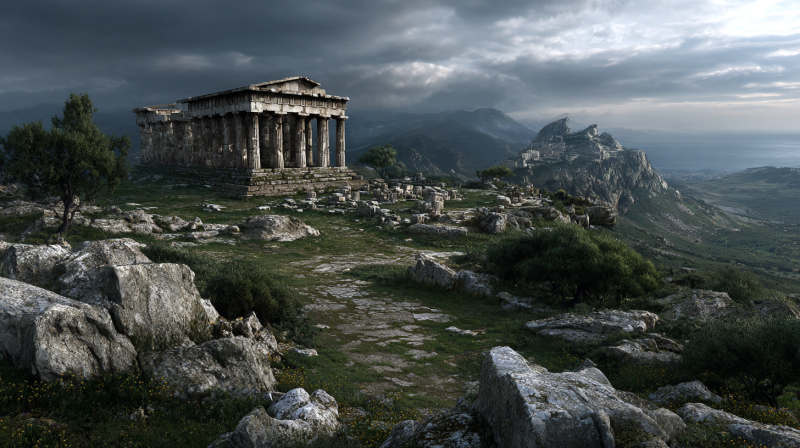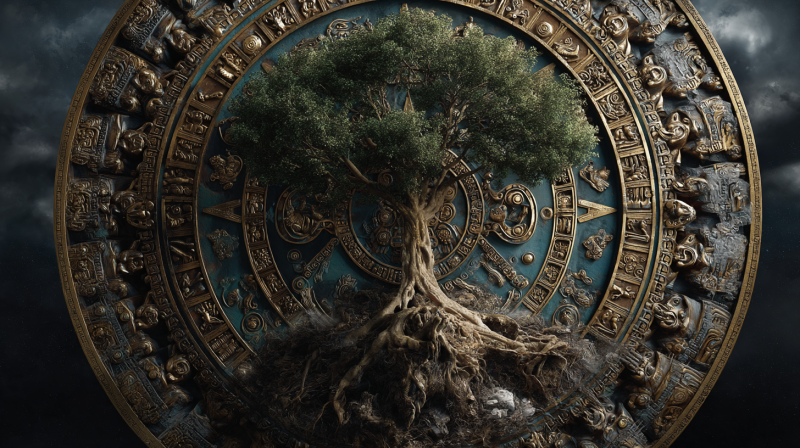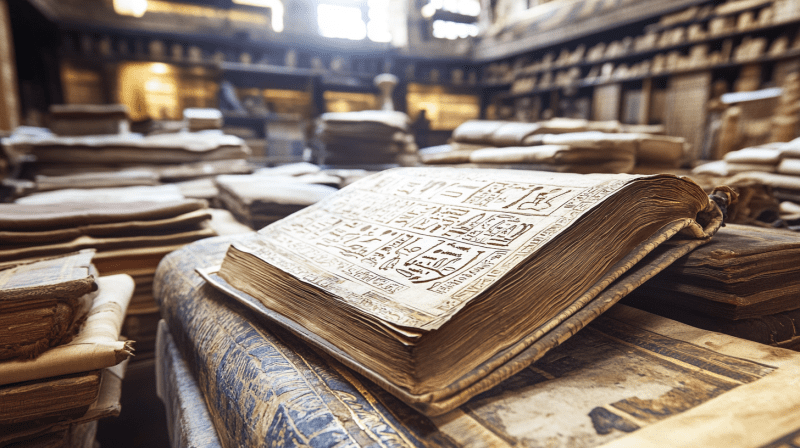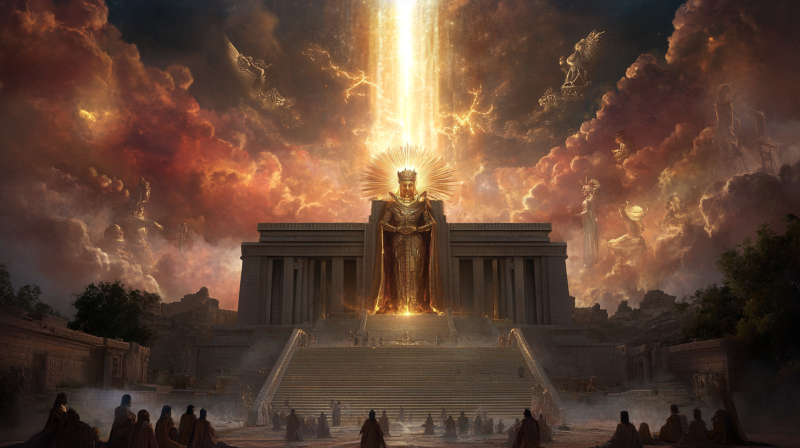Exploring the Divine Hierarchies and Rivalries Across Mythologies
From the peaks of Mount Olympus to the shining gates of Asgard, humanity has long envisioned its gods as rulers seated on celestial thrones. These pantheons were more than collections of deities; they were reflections of cosmic order, human politics, and the eternal struggle between chaos and harmony.
Each civilization painted its divine world like a mirror of its own. The Greeks saw a family of quarrelsome immortals whose passions echoed human frailty. The Norse envisioned grim warriors bound by fate, marching toward an inevitable end. The Egyptians established a sacred hierarchy of gods to maintain ma’at (universal balance), whereas the Hindus spoke of cosmic cycles sustained by divine harmony.
Across thousands of years and continents, the gods ruled their worlds through courts and councils, laws and rivalries, alliances and betrayals. These divine dramas reveal something timeless: that even in heaven, power is never secure, and order must always be earned.
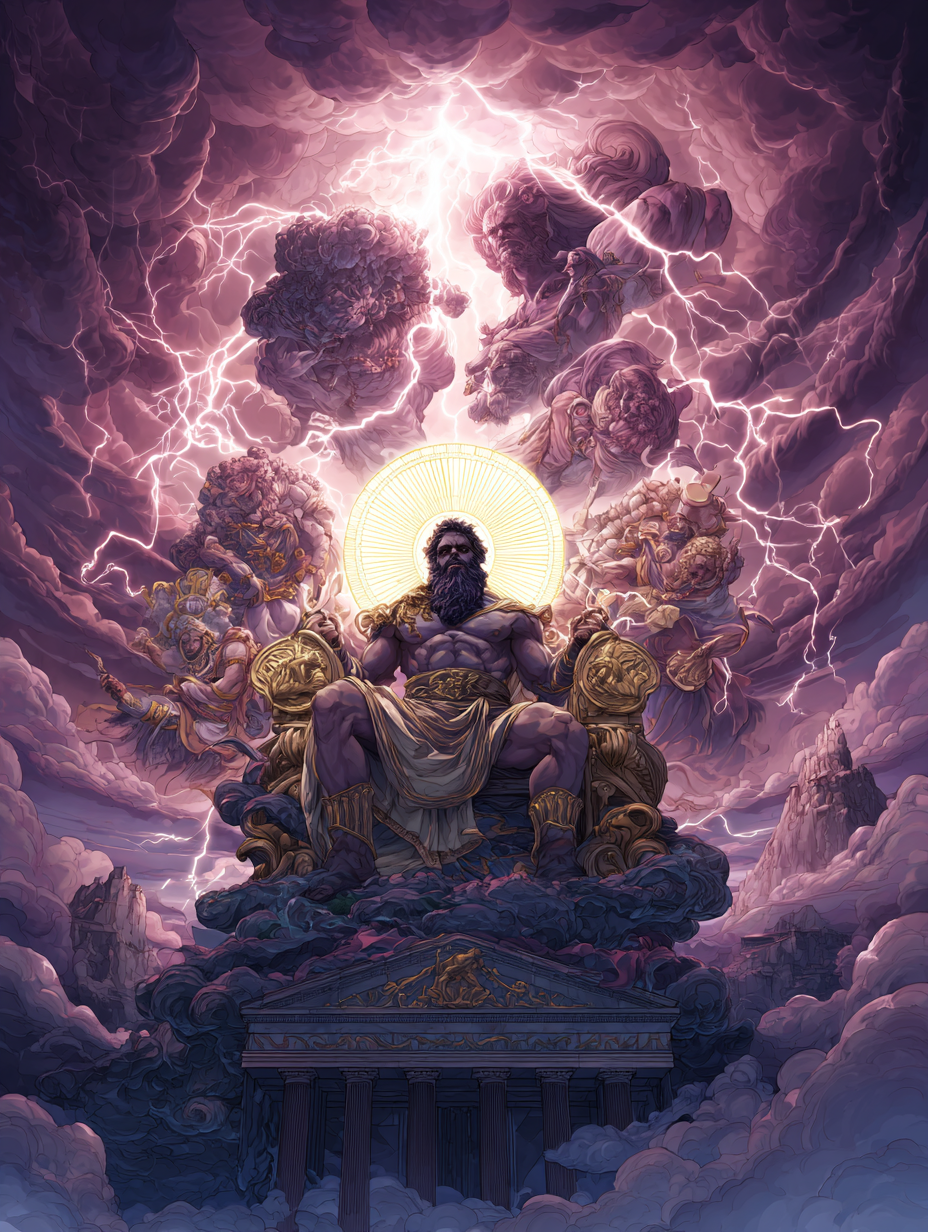
Olympus: The Storm King’s Dominion
High above the mortal world rose Mount Olympus, home of the Greek gods, radiant and eternal. But before Zeus ruled with his thunderbolt, the universe belonged to the Titans, the old generation of gods led by Cronus.
Cronus had overthrown his father, Uranus, only to be warned that one day his own child would do the same. In terror, he devoured each newborn as soon as they emerged from Rhea’s womb. But Rhea, grieving and cunning, hid her last child, Zeus, on the island of Crete, where nymphs raised him in secret.
When he came of age, Zeus freed his siblings—Poseidon, Hades, Hera, Demeter, and Hestia—and led them in a ten-year war against the Titans. The Titanomachy was a war of thunder and stone, sky against earth. When the dust settled, Zeus cast the defeated Titans into Tartarus and took the heavens for himself.
The Olympian Order
- Zeus: Supreme ruler, god of thunder and justice.
- Hera: Queen of the gods, goddess of marriage and family.
- Poseidon: Ruler of the seas, master of tempests and earthquakes.
- Hades: Lord of the underworld, keeper of souls and shadows.
- Athena, Apollo, Artemis, Ares, and Dionysus: the new generation, governing wisdom, the arts, war, and ecstasy.
The Olympians formed a divine monarchy, but their harmony was fragile. Zeus’s authority was often challenged, from Hera’s jealous plots to the proud defiance of Prometheus.
Rivalries and Rebellions
Greek myths teem with divine conflict. Athena and Poseidon vied to become the patron of Athens, offering an olive tree and a saltwater spring in a contest of gifts. Ares clashed with Athena in every war, Hera schemed against Zeus’s many lovers and their offspring, and Apollo and Dionysus embodied the eternal duel between reason and passion.
Despite its grandeur, the Olympian court was a reflection of mortal politics: brilliant, treacherous, and deeply human.
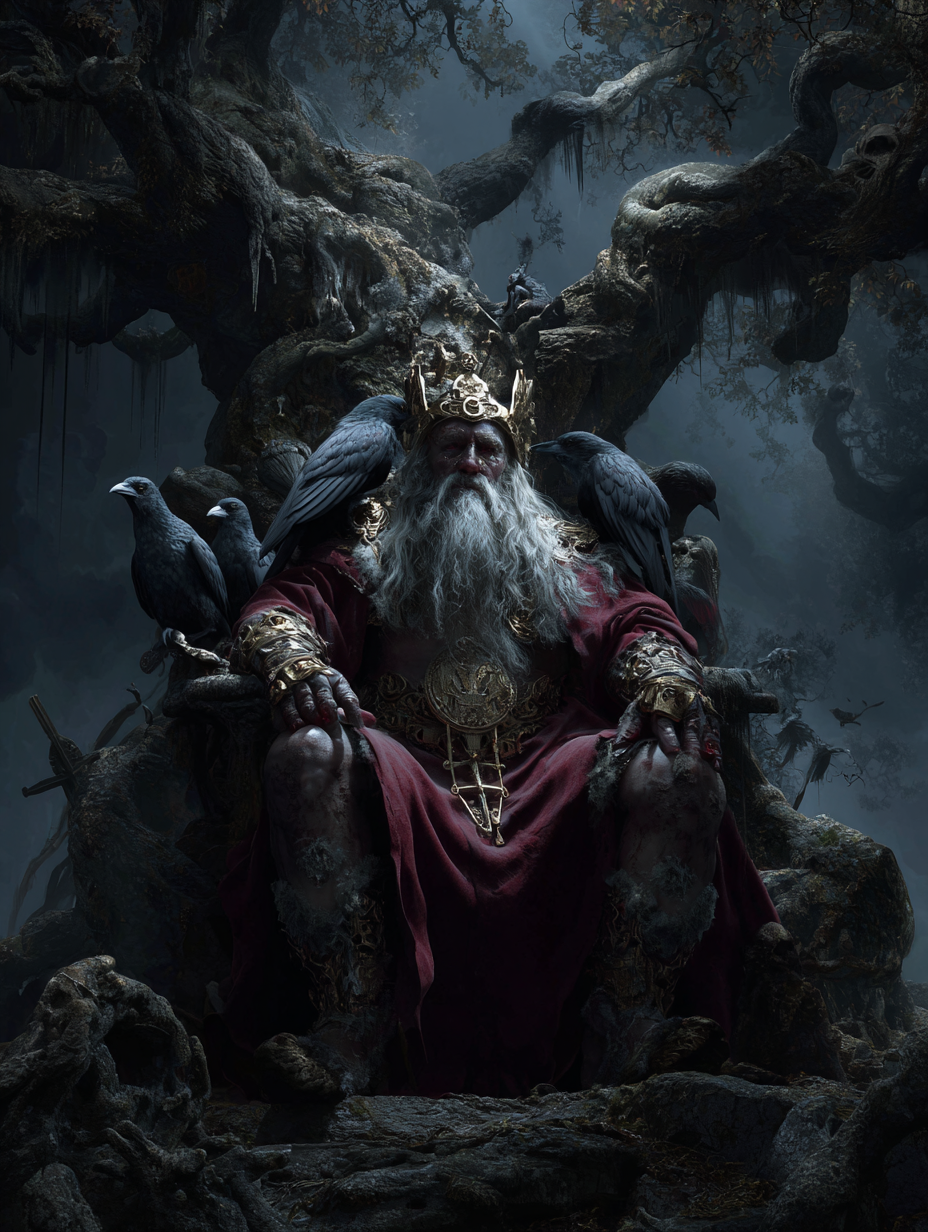
Asgard: The Northern Realm of Fate
Where Olympus gleamed with sunlight, Asgard was forged in frost and fire. The Norse gods, known as the Æsir, lived in shining halls behind walls built to keep out the giants—the chaotic forces of nature and time.
At the head of the pantheon stood Odin, the Allfather. Unlike Zeus, he was not a god of thunder or conquest but of wisdom and sacrifice. To drink from the Well of Knowledge, he gave up one of his eyes. To gain mastery of the runes, he hung himself from the World Tree, Yggdrasil, pierced by his own spear for nine nights.
His throne, Hlidskjalf, allowed him to see all realms—the nine worlds of Norse cosmology, from Midgard (Earth) to Hel (the underworld). Yet even Odin could not escape the shadow of fate: Ragnarök, the twilight of the gods, when all creation would burn.
The Aesir Hierarchy
- Odin: The wise ruler, god of knowledge and magic.
- Frigg: His queen, goddess of foresight and motherhood.
- Thor: The thunder god, protector of gods and men.
- Baldr: The beloved god of light and purity.
- Loki: The trickster, a shapeshifter destined to betray the gods.
- Tyr, Heimdall, Freyja: The gods of war, vigilance, and love.
The Seeds of Betrayal
While the Æsir fought together against the Jötnar (giants), discord brewed within their ranks. Loki, once Odin’s sworn brother, grew jealous of their glory. His mischief turned to malice when he orchestrated the death of Baldr, the shining son adored by everyone.
Baldr’s death set the gears of fate into motion, leading to Ragnarök, the final war where gods and monsters destroy one another, and the world is consumed by fire.
If the Greeks saw their gods as eternal, the Norse saw them as doomed yet defiant, heroes fighting fate itself. Asgard’s court was less about dominion and more about dignity in the face of inevitable loss.
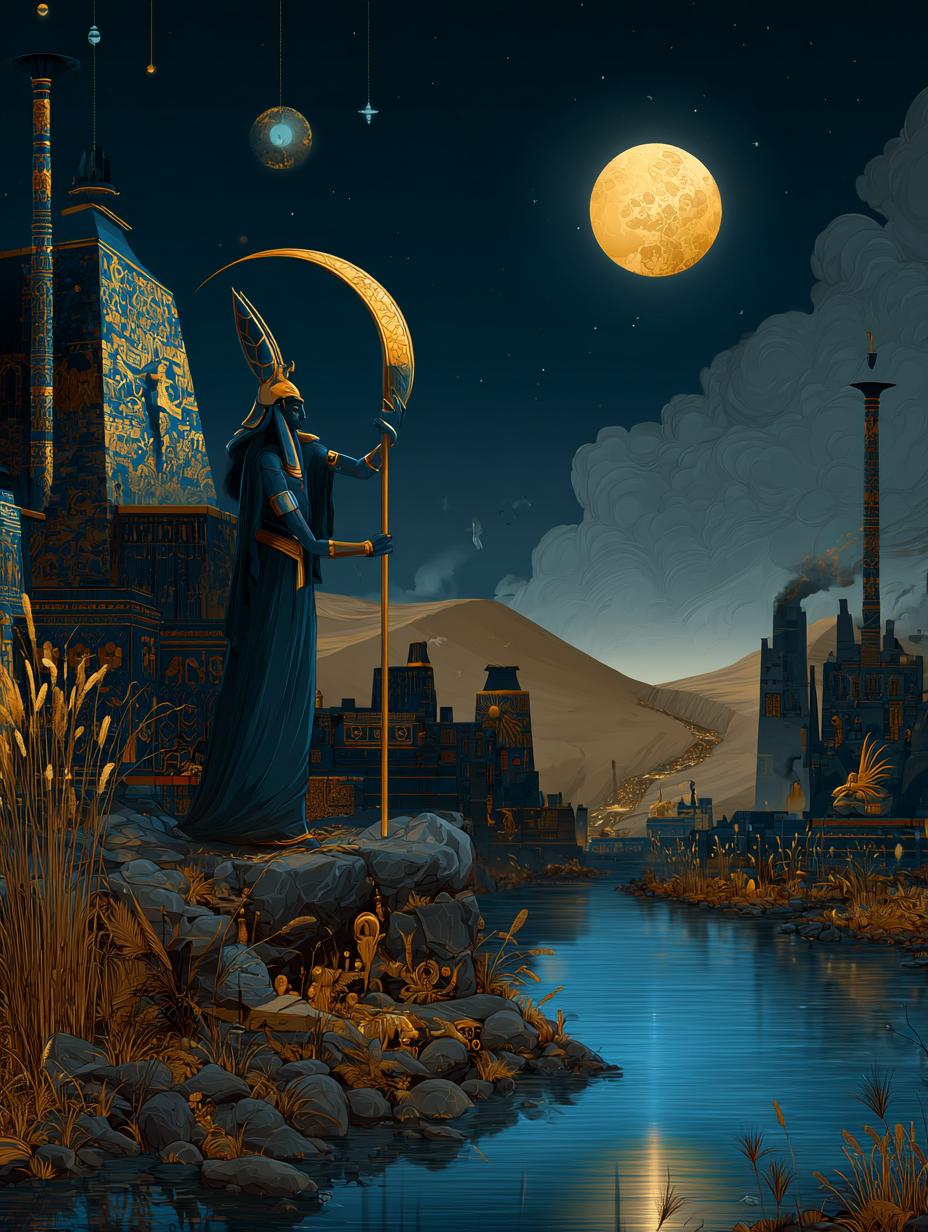
Egypt: The Eternal Kingdom of Ma’at
On the banks of the Nile, where the sun rose each morning to bring life to the desert, the Egyptians envisioned a divine order sustained by balance—Ma’at.
Their pantheon was more than just celestial; it was the embodiment of cosmic law. Every god has a role to play in maintaining equilibrium between life and death, chaos and creation.
At the center stood Ra, the sun god, whose daily voyage across the sky symbolized the rhythm of existence. Each night, Ra descended into the underworld to battle Apophis, the serpent of chaos, ensuring the dawn would come again.
The Divine Court of Egypt
- Ra: The solar creator, ruler of gods and mortals.
- Osiris: The god of the afterlife, lord of rebirth.
- Isis: Goddess of magic and devotion, wife of Osiris.
- Horus: The falcon-headed sky god, avenger of his father.
- Set: The god of storms and chaos, Osiris’s rival and murderer.
- Anubis, Thoth, and Hathor: Guardians of judgment, wisdom, and love.
The Drama of Osiris and Set
The most famous tale about Egypt is the story of Osiris, the fair pharaoh killed by his jealous brother Set. Set cut apart Osiris’s body and threw it all over Egypt. But Isis put him back together with love and magic and gave him life long enough to have a son named Horus.
Horus fought Set for the throne when he became a man. Their fight went on in the sky and on the ground, and even the gods couldn’t agree on the outcome. In the end, Horus won and brought order back to the universe. Ma’at wanted equilibrium to be restored, and it was. Osiris became the lord of the dead, while Horus became the lord of the living.
The Egyptian gods and goddesses were not like the Olympians, who were always fighting. Instead, they lived in a moral world where chaos could never reign forever since the universe was made to return to harmony.
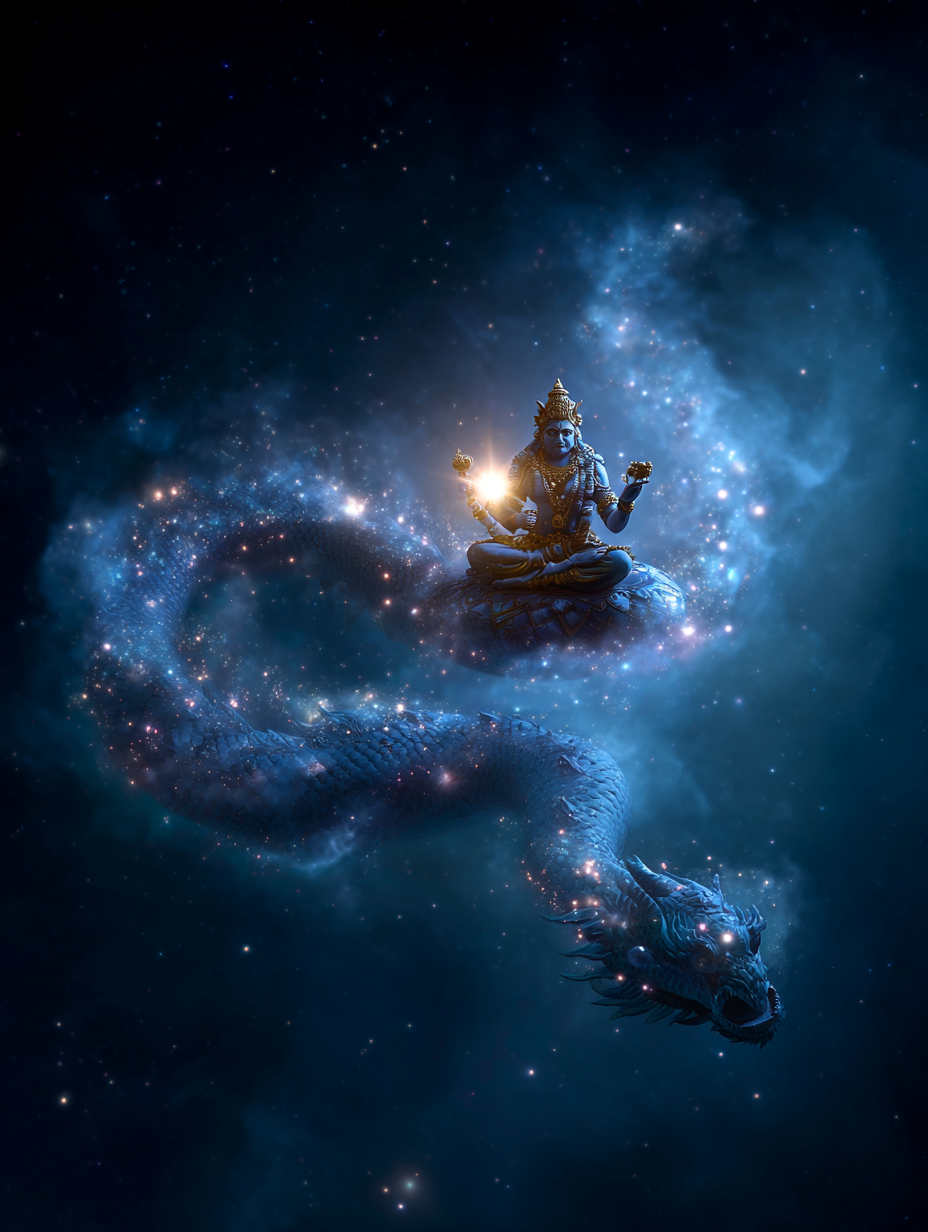
India: The Divine Symphony of Balance
In India, the gods of Hindu mythology are less kings and queens than manifestations of eternal principles. The universe is viewed as an endless cycle of creation, preservation, and destruction, with each phase represented by the Trimurti:
→ Brahma, the Creator
→ Vishnu, the Preserver
→ Shiva, the Destroyer (or Transformer)
This triad represents not conflict but balance—each divine function is necessary to sustain existence.
The Cosmic Order
- Brahma: The four-faced god who created all living beings.
- Vishnu: The compassionate preserver who keeps order through his avatars, Rama, Krishna, and others.
- Shiva: The ascetic destroyer who meditates upon Mount Kailash, dissolving illusion and ego.
- Lakshmi, Saraswati, and Parvati: The Trimurti’s divine counterparts, the goddesses of prosperity, wisdom, and power.
- Indra, Agni, Varuna: The older Vedic gods of storm, fire, and sea, who retain places in myth and ritual.
The Wars of Heaven and the Balance of Dharma
The Devas (gods) and Asuras (demons) in Hindu epics are neither completely good nor bad; they are cosmic forces that are at odds with one another. Their never-ending fights are a metaphor for the fight that goes on in creation and in the human heart.
Krishna, Vishnu’s incarnation in the Bhagavad Gita, tells people that they must follow dharma, the law of righteousness. Even fighting between gods is part of bringing things back into equilibrium.
Hindu mythology doesn’t conclude in a catastrophe like Ragnarök; it keeps going on and on. Creation and destruction are not opposites; they are partners in an old dance.
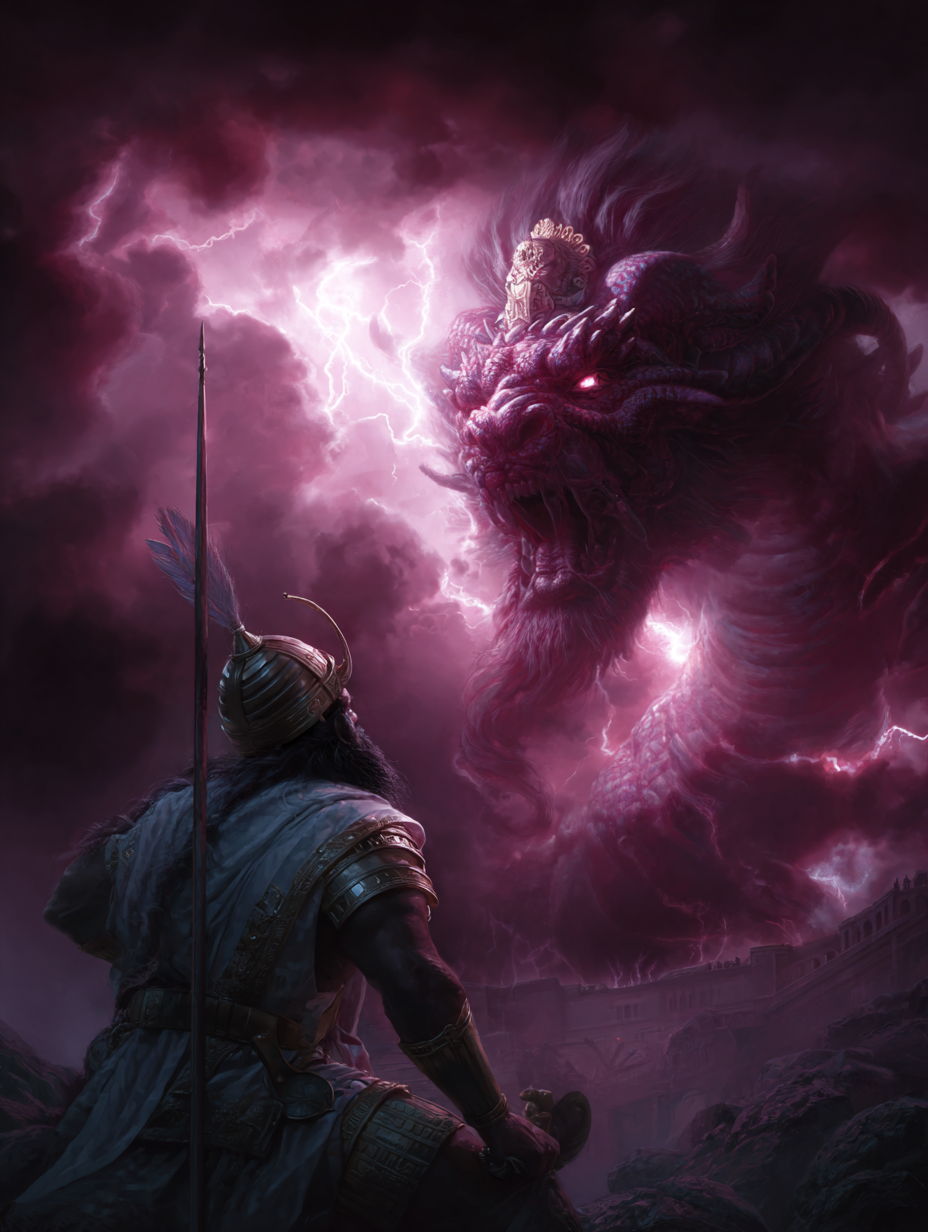
Mesopotamia: Thrones Beneath the Stars
Long before Olympus or Asgard, the people of Mesopotamia worshiped a vast pantheon of sky, storm, and earth gods whose myths shaped all later civilizations.
At the top stood Anu, the distant god of heaven, followed by Enlil, the god of wind and decrees, and Enki (Ea), the god of wisdom and waters. But it was Marduk, the champion of Babylon, who rose to ultimate power.
The Rise of Marduk
According to the Enuma Elish, the Babylonian creation epic, the world began in a watery chaos ruled by Tiamat, the primordial dragon. The younger gods, tired of her tyranny, chose Marduk to lead them. He slew Tiamat and split her body to form the heavens and the earth.
Marduk became king of the gods as a result of this act, serving as a divine mirror for Babylon’s rise to power. His story, like Zeus’s, is one of order born from rebellion.
The Sumerian Order
- Anu: Father of the gods.
- Enlil: Ruler of storms and destiny.
- Enki: God of wisdom and creation.
- Marduk: The hero god of Babylon.
- Ishtar (Inanna): Goddess of love and war, fierce and unpredictable.
Divine Rivalries
There were many fights and jealousies in the Mesopotamian pantheon. For example, Enlil and Enki fought over the fate of humanity, and Ishtar went down to the underworld to fight her sister Ereshkigal. Their myths, written in cuneiform on clay tablets, show that their gods are not all-powerful but are limited by cosmic law and fate.
In this case, too, the heavens reflected humanity. Kings ruled by divine right, but they still had to follow the gods’ rules.
Patterns Across the Pantheons
Despite vast cultural differences, striking parallels unite these divine hierarchies:
| Theme | Greek | Norse | Egyptian | Hindu | Mesopotamian |
|---|---|---|---|---|---|
| Supreme Deity | Zeus | Odin | Ra/Osiris | Brahma/Vishnu/Shiva | Anu/Marduk |
| Rebellion and Succession | Zeus vs. Cronus | Odin vs. Ymir’s kin | Horus vs. Set | Devas vs. Asuras | Marduk vs. Tiamat |
| Cosmic Order | Justice of Zeus | Fate and Ragnarök | Ma’at | Dharma | Me (Divine Law) |
| Core Rivalries | Hera vs. Zeus’s lovers | Loki vs. Æsir | Set vs. Horus | Devas vs. Asuras | Enlil vs. Enki |
Each pantheon tells the same story in a different voice: order arises from chaos, power must be justified, and rebellion is both destructive and creative.
The divine hierarchy is more than just a structure in the universe; it’s a mythical map of what it means to be human.
The Eternal Court Within
People have considered the heavens to be kingdoms that are like their own, from Olympus to Asgard and from the Nile to the Ganges. The gods rule, fight, love, and fall, and their struggles are like our own. The throne is never safe in any myth. It is necessary to keep order and restore balance, and even the divine must obey the law, fate, or conscience. The pantheons may look different, but they all mean the same thing: the universe is a court of eternal motion, where power is not dominance but harmony, and where every god, like every soul, plays a part in the vast cycle of creation and renewal. The thrones of Olympus and Asgard may become myths, but the questions they asked about justice, leadership, sacrifice, and fate will always be important. The gods have not really gone away. They have just moved inside of us.
Citations
- Hesiod, Theogony
- Snorri Sturluson, Prose Edda
- Pyramid Texts & Book of the Dead (Ancient Egypt)
- Rigveda, Mahabharata, Bhagavad Gita
- Enuma Elish (Babylonian Creation Epic)
- Graves, Robert. The Greek Myths
- Leeming, David. The World of Myth: An Anthology
- Eliade, Mircea. Patterns in Comparative Religion

